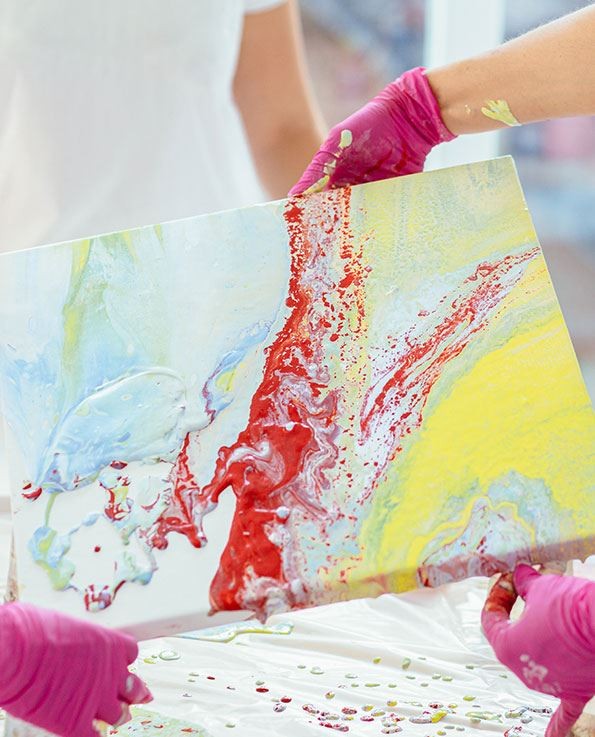
People often put so much weight on paint finish that they sometimes forget the importance of preparation for a painting project. While the paint finish affects the amount of luster your indoor or outdoor paint gets, the preparation part determines paint longevity.
Besides leaving the surface pristine, proper preparation also helps treat structural dampness.
If you’re planning to paint or repaint a residential or commercial space with such an issue, this article can help you learn why it happens and how you can prevent it from ruining your new paint.
Dampness: Why and How It Happens
Several things can cause dampness, but the most common one is condensation. This occurs when a cold surface is exposed to hot air, like what happens in kitchens and bathrooms when someone is cooking and showering. It may also appear on the windows with contrasting indoor and outdoor temperatures.
In many cases, condensation is unavoidable. Still, you must remember not to let it sit for too long, especially on surfaces to be painted.
To deal with dampness before it becomes worse, look for the following signs:
- Mold: You know you have a problem with dampness if mold starts emerging on your walls. In the early stages, mold would not be immediately visible but is recognizable because of its musty smell.
- Discoloration and peeling: Damp walls also tend to have discolored or peeling paint. In some cases, the plaster could also show signs of fragmentation.
- Rising damp, which appears as watermarks that move vertically down the wall.
- Penetrating damp that comes in patches, like a map on the wall that spreads horizontally.
Rising damp results from groundwater penetrating the individual bricks used to build your walls. While it is quite rare, the moisture can still make its way to the interior side of the walls, particularly after a long, heavy rain.
On the other hand, penetrating damp happens because of water ingress or a leaking pipe. It usually signifies exterior wall damage or roofing issues.
How to Treat Dampness Before Painting
Whether you’re planning to use decorative coatings on the walls or on the ceiling, you must remember to keep the surface immaculate.
During painting preparation, get rid of any issues that may impede the paint from bonding into the surface optimally, including dampness.
We’ve listed four ways to help you treat dampness and get the best paint results:
1. Pinpoint the source of the dampness.
Painting damp walls is a waste of money, time, and effort. Even with the help of waterproof emulsions, you’re bound to get the same problem if you don’t deal with the root cause of dampness before applying a new coat of paint.
As mentioned earlier, dampness can emerge from condensation, which can be a result of poor ventilation. However, in some cases, it may also be because moisture penetrated the walls from a leaky roof or plumbing.
Before you can do anything to deal with the dampness, you must first pinpoint its primary cause. After knowing what it is, you can begin dealing with the issue.
Let the walls dry out completely and check after a week or so if the problem persists. If not, you’re good to go.
2. Deal with mold.
Dampness – especially one that has been neglected for some time – may also come with mold growth. Make sure you remove any moldy patches before proceeding to the next step of your renovation.
These foul-smelling patches on your walls can be cleaned using a 1-to-3 ratio of bleach and water on a bucket. To remove the mold, wipe or scrub the surface with a scrub brush or heavy-duty sponge.
You may need to let the solution soak into the wall for several minutes for this to work.
If you find a heavily infested area, you may need to reinforce your bleach and water mixture with a formulated mold remover to ensure that the mold infestation is cleared totally.
Below are some tips you should also keep in mind when getting rid of molds:
- Wear rubber gloves when using bleach and other mold cleaning products to protect your hands.
- Use hydrogen peroxide as an alternative mold-removing agent.
After the mold is removed, you must wash down the area with water and let it dry completely.
3. Patch cracks and holes.
Cracks and holes on your wall not only have the potential to cause dampness but also ruin the overall finish of your paint.
Using a waterproof sealant or plaster patch, fill in the crevices that appear on the surface you're planning to paint. Use plaster for bigger areas and sealant for smaller ones.
4. Don’t skip waterproofing.
Remember to waterproof your walls using damp seal paint. These may come in different colors, so choose one that will help you get a better paint finish.
This can give you the peace of mind that the issue won’t be reappearing anytime soon, as waterproofing keeps moisture from seeping into the walls. As a bonus, it also helps bind the finish coat of the painted surfaces, especially in kitchens and bathrooms.
Solve Your Damp Problem for Good
Painting over a damp patch will result in a better finish if you use specialist paint. Paints designed for damp surfaces are specially formulated to deal with the problem and prevent it from recurring. They also allow moisture to escape to avoid dampness buildup.
Check out our paint gallery for all your paint needs.
We offer high-quality decorative paint and finishes perfect for residential and commercial spaces. Send us a message for more information.
